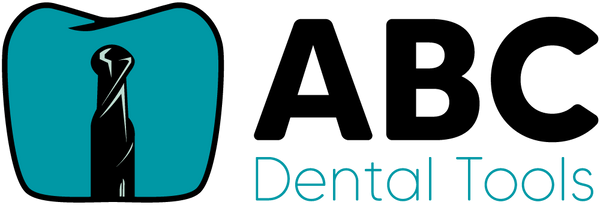Tips, Tricks, and FAQs
Share
Mastering In-House Milling and Grinding for Dental Restorations:
Tips, Tricks, and FAQs
In the evolving landscape of digital dentistry, in-house milling and grinding have transformed how dental professionals approach restorative treatments. Whether you’re using CAD/CAM systems to produce crowns, veneers, or bridges, having the capability to mill and grind restorations in-house offers precision, speed, and customization for your patients. But how can you make the most of this technology?
Here, we’ll share valuable tips, tricks, and answers to frequently asked questions about optimizing your in-house milling and grinding process for high-quality restorations.
Tips and Tricks for Efficient Milling and Grinding
- Choose the Right Material for the Restoration The material you choose will affect the strength, aesthetics, and longevity of the restoration. Zirconia, lithium disilicate (e.max), and composite resin are among the most common materials used for in-house milling. Each material has unique properties:
- Zirconia is ideal for posterior restorations because of its strength.
- Lithium disilicate is a good choice for esthetic anterior restorations, offering a balance between strength and translucency.
- Composite resins work well for temporary restorations or when a quicker, less permanent solution is needed.
Always ensure your CAD/CAM system is compatible with the materials you’re using.
- Regularly Calibrate Your Machine Proper calibration is crucial for precision milling and grinding. Misalignment can lead to inaccurate restorations, wasting time and materials. Regular maintenance schedules should include:
- Checking the spindle for wear.
- Replacing burs when needed.
- Running a calibration test periodically to ensure your equipment stays accurate.
- Optimize Toolpath for Efficiency Most milling systems allow you to adjust the toolpath settings. By optimizing these paths, you can reduce the overall milling time without sacrificing quality. A smoother toolpath decreases wear on the tools and produces more precise restorations, which can save you both time and costs in the long run.
- Dry Milling vs. Wet Milling: Know When to Use Each
- Dry milling is faster but can generate heat, which may be problematic for materials like zirconia. It’s ideal for materials that don’t require cooling or lubrication.
- Wet milling is essential for materials that generate heat, such as lithium disilicate. The cooling liquid helps prevent cracks, ensuring the integrity of the restoration.
It’s essential to follow manufacturer guidelines regarding wet and dry milling to prevent damage to both your restorations and the milling machine.
- Pay Attention to Margins and Fit The marginal fit of restorations is critical for both aesthetics and function. Fine-tuning the settings in your CAD/CAM software and choosing the correct tools for finishing the margins can significantly improve the fit. Run multiple simulations before milling, and always inspect the final product before placement.
- Polish and Sinter for Best Results For zirconia restorations, sintering is a key step. Ensure the furnace is calibrated to the correct temperature for optimal strength and translucency. Post-sintering, polishing the restoration enhances esthetics and smoothness. Use high-quality polishing kits specifically designed for the material you’re working with.
Frequently Asked Questions (FAQs)
- What is the difference between milling and grinding?
Milling involves cutting and shaping the material, whereas grinding involves using abrasive particles to wear down and smooth the restoration’s surface. Milling is typically used for rough shaping, and grinding is often used for final touches and precision adjustments.
- How long does it take to mill a restoration?
The time varies depending on the material, complexity, and the type of milling system you’re using. On average, milling a single crown can take anywhere from 10 to 30 minutes. Optimizing your toolpath and using advanced machines can reduce this time.
- How often should I replace the milling burs?
The frequency of bur replacement depends on the material being milled and how often you use the machine. With other manufacturers' tools, you may need to replace the burs after every 10-15 units. With ABC Dental Tools, one set or burs can last much longer - 10 times as long, or more, in most cases! Regularly inspecting the burs for wear and tear will ensure consistent quality.
- Can I mill multiple units at once?
Yes, most CAD/CAM systems allow you to mill multiple restorations in one cycle. Batch milling can save time and improve efficiency, especially for larger cases. Ensure your machine’s software is optimized for multi-unit milling and that you have enough material blocks.
- What’s the best way to maintain my CAD/CAM system?
Regular maintenance is key to extending the life of your machine. Follow the manufacturer’s maintenance schedule for cleaning, calibration, and lubrication. Pay special attention to the spindle and burs, as they bear the brunt of the work.
- How can I ensure the color match of my restorations?
Matching the restoration to the patient’s natural teeth requires careful material selection and finishing. Many systems offer pre-shaded materials that can help ensure a consistent color. Additionally, staining and glazing after milling can enhance the match. Some CAD/CAM systems include spectrophotometers for digital shade matching, which can improve accuracy.
- What is the learning curve for in-house milling?
While it may seem intimidating at first, modern CAD/CAM systems are designed with user-friendly interfaces. With proper training, most dentists become proficient within a few weeks. Many manufacturers offer in-depth training programs, and it’s beneficial to take advantage of those resources.
Final Thoughts
Milling and grinding restorations in-house can elevate your practice by offering faster turnaround times, cost savings, and greater control over the restorative process. By understanding the nuances of the technology and maintaining your equipment, you can produce high-quality restorations that meet both esthetic and functional demands.
Whether you’re just starting with in-house milling or looking to refine your workflow, these tips and tricks can help you achieve better outcomes for your patients, ensuring long-term success in your practice.
